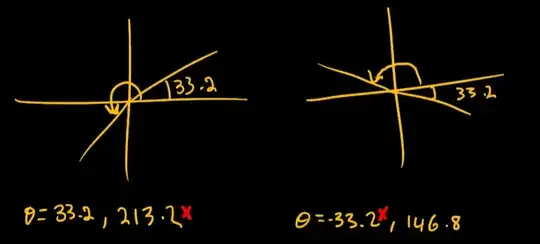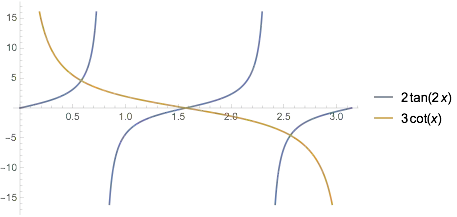The question is
Find the solutions to the equation $$2\tan(2x)=3\cot(x) , \space 0<x<180$$
I started by applying the tan double angle formula and recipricoal identity for cot
$$2* \frac{2\tan(x)}{1-\tan^2(x)}=\frac{3}{\tan(x)}$$ $$\implies 7\tan^2(x)=3 \therefore x=\tan^{-1}\left(-\sqrt\frac{3}{7} \right)$$ $$x=-33.2,33.2$$
I was lead to the final solution that $x=33.2,146.8$ however the answer in the book has an additional solution of $x=90$, I understand the reasoning that $\tan(180)=0$ and $\cot(x)$ tends to zero as x tends to 90 however how was this solution found?
Is there a process for consistently finding these "hidden answers"?

